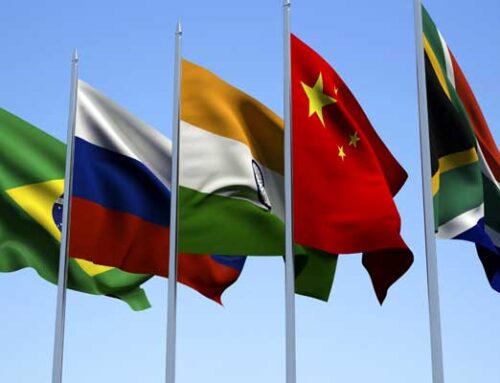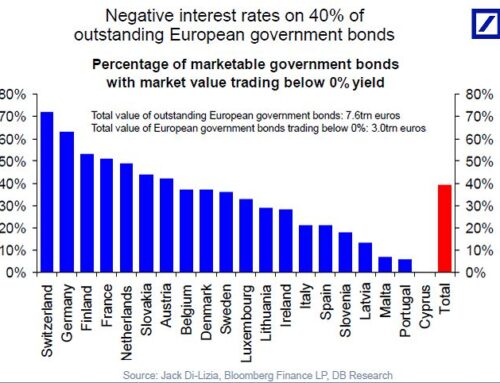The author ( Gopal Kavalireddi ) is not an economist or experienced financial analyst but provides a layman’s view of the issues at hand Backed by data & facts open to a reader’s own interpretation.
Over the last 9 months, starting Jan 2018, every Tom, Dick & Harry worth his salt has been churning out reports of an impending global crisis & crash, more so since the trade war between US-China took an ugly turn. This has resulted in Fitch & OECD[1] to re-evaluate the world & country-specific growth rates, with sharp revisions for Turkey, Argentina, South Africa and Brazil.
Global trade has cooled faster than expected, falling to around 3% in the first half of 2018 from 5% in 2017. China is expected to lose 0.5% of its GDP growth, increasing the loss to a possible 1.5%, if these trade wars continue further.
Also, the strength of the dollar in recent times has literally bashed the currency markets, with some countries facing tremendous issues within their economy.
If we look at the emerging market currencies vs. USD over the last 70 years, and specifically since 2008 (Global Financial Crisis -GFC), Argentinean Peso has devalued by 10X, Turkish Lira by 5.4X, while India is still holding much better. Of course, Argentina saw its worst fall between 1957–1977 but it did recover over the next 10 years.
Also, over the last 10 years, the Central Banks of US, Japan, ECB, UK alone have printed more than $ 9 trillion in currency & much of this has come into the financial assets – stocks, bonds, housing etc where the prices have multiplied multi-fold, giving rise to astronomical valuations in some pockets.
In its article “Is another Global Financial Crisis on Horizon” there is a reference to $290 trillion coming into financial markets & as most asset valuations are expensive, any possible withdrawal by investors from these assets can crash most of the prices, pushing into a financial market collapse.
I felt that India dodged a temporary scare when SEBI retracted its circular on FPI ownership issues as there was a possibility of huge sell-off before Dec 2018. But other issues persist – NPA’s, currency depreciation, rising interest rates, inflation levels, corporate governance, expensive valuations in some sectors, lower private investment, CAD, the Fiscal deficit – and many more. I had written about these issues in my answers:
India Specific Issues: The average Indian household savings rate was at 36% a couple of decades ago, which has come down drastically. to less than 30%(Last I heard was at 27% or 29%). ( Reference see here )
At the same time, ever since demonetization, retail investors have been filling the coffers of mutual fund managers, making them chase expensive market valuations. Also, fund managers have no choice but to deploy the money, to give returns to investors.
FII’s haven’t really pushed forward with investments in India. If that was the case, then the investments over the last two years wouldn’t be a pittance, in comparison to the MF investments given above.
The domestic fund flows are drying up as we speak and once the ‘music’ stops, things can come to a standstill
Financial assets held by households form an important part of overall wealth and are an important source of revenue, either through the sale of those assets or refinancing or as a source of property income (such as interest and dividends). The structure of financial assets held by households, which carry different risk levels and as a consequence, may affect household wealth, constitutes a major input in economic analyses such as studies of asset bubbles and analyses of welfare.
Most Indians are on a consumption mode, with the household debt to GDP at its highest level since 2008, and is expected to go up to 15% over the next 5–7 years, if financial managers are to be believed. This doesn’t augur well but at the same time, for a populous country like India, consumption contributes to a large % of the GDP and is a necessity at times.
Import bills are rising with crude at 4 year highs and with unabated consumption, it can only rise further, putting the Govt in a precarious position with respect to fiscal deficit. Inflation can rise from here, making interest rates rise and thereby cooling off growth – which doesn’t augur well for an economy like India.
Hence, there are many issues plaguing India and most economies at this time. Asset crashes due to defaults – till now it was only equity markets but the latest ILFS saga is making investors rethink on the bond markets – Commercial Paper (CP) held by many, and the possibility of defaults rising further. Housing Finance Companies (HFCs), NBFC’s are staring at an increased cost of capital, putting strain on liquidity, giving rise to solvency issues.
Conclusion :
Wikipedia in its page on stock market crises & crashes lists 50 in number over the last 380 years, out of which 24 have come in the last 50 years alone. This information is largely pertaining to US & Europe and, if we account for other minor crises occurring in many parts of the world, I am sure they would cross at least 200 instances.
The reasons for frequent occurrences are due to highly coupled, volatile economic environment, trade + currency+spending related issues, govt debt, reckless printing of money, along with asset bubbles in certain developed markets spreading to other parts of the world. I believe that the hierarchy is as follows:
Expensive valuations -> Asset bubble creation & spread -> Global Crisis -> Global Crash -> Economy Extinction Level Event (EELE).
The Govt’s & Central Banks of the world are busy doing whatever supports their own country or geography. But, this doesn’t work like that. A cohesive plan of action is the need of the hour/day/month. Actions taken in isolation will only harm the economies further.
- Will a global crisis come in the next 3 years? Possibly.
- Will it result in a global crash? Maybe.
- Will it lead to the extinction level event of the economy of a country? I doubt so.
In case that happens for any country, it automatically will have a fall-out that can decimate the world we live in.
Forget economies, the survival of the humankind itself will become a question mark.
Financial data & source credits: Bloomberg, Central Statistical Office, Kotak Securities, Times of India, money.CNN, Business Insider, The Statistics PortalOECD.org – OECD Bloomberg Quint, Market Oracle, Buy & Sell Forex Online | Foreign Exchange | Forex India – BookMyForex Economic Times, Visual Capitalist, Trading Economics, Business Standard, Moody’s Ratings and other business websites.















